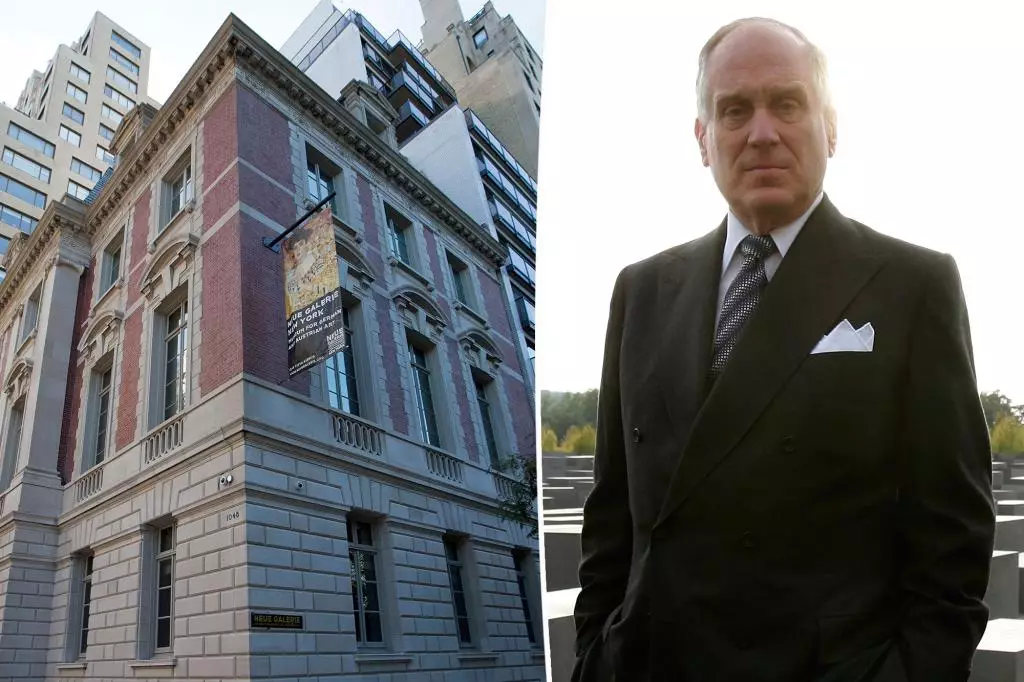A series of vandal attacks targeting art galleries across New York City have raised questions about the appropriate response from gallery owners and the art community as a whole. The attacks, involving anti-Israel graffiti and red paint, have left gallery owners divided on whether to address the incidents publicly or dismiss them as mere nuisances. The motives behind these attacks range from perceived rank anti-Semitism to political activism against Israeli representation in the art world. This ongoing battle highlights the dilemma faced by gallery owners regarding the best course of action to take when faced with acts of vandalism.
The Decision to Keep Silent
Some gallery owners have made the controversial choice to keep these attacks a secret. Their reasoning reflects conflicting perspectives within the art world. On one hand, some believe that publicizing the attacks would provide credibility to the vandals, thereby encouraging similar actions in the future. On the other hand, some argue that as artists, they cannot suppress free expression, even when it manifests in the form of vandalism. These galleries range from small, independent ones with no visible connection to Middle Eastern politics, to prestigious institutions led by prominent Jewish figures.
Over the past few weeks, numerous galleries have been targeted by vandals. Red paint, symbolizing blood, has been splattered across these galleries, leaving a disturbing mark. Specific messages have also been plastered on walls, including quotes of purported Palestinian death tolls and statements urging the cessation of collaborations with and sales to Zionists. One of the most severely affected galleries, Pace, had to temporarily close its doors after the gallery’s exterior was sprayed with the word “Intifada” in bold red letters. The vandals directed their anger specifically towards Pace because of its representation of Israeli artist Michal Rovner and her video work titled “Signals,” which highlights the plight of hostages taken by Hamas during recent attacks.
In response to these acts of vandalism, some gallery owners have chosen to remain silent, while others have decided to speak out against the incidents. Pace gallery issued a statement acknowledging the attack, expressing concern for the safety of their staff and visitors, and emphasizing their commitment to fostering a safe and open workplace. Lévy Gorvy Dayan, another gallery that was affected, had previously criticized an open letter in support of Palestine due to what they considered to be one-sided representation. They denounced violence in both Israel and Gaza and expressed deep concern over the unfolding humanitarian crisis. The controversy surrounding the open letter eventually led to the firing of Artforum’s editor, as it was mistakenly interpreted as reflective of the magazine’s position.
The art community’s response to these acts of vandalism has been fragmented. Some insiders within the industry believe that the general public and even many art enthusiasts are unaware of the severity and extent of these hate-fueled attacks. They draw parallels between these acts of vandalism and the marking of Jewish businesses in Germany before the Holocaust, emphasizing the importance of raising awareness and condemnation. On the other hand, there are those like Isaac Lyles, co-founder of Lyles and King gallery, who support the freedom of expression and opinion of the vandals. Lyles suggests that galleries should serve as platforms for various viewpoints and claims that Lyles and King gallery was affected as part of a wider sweep targeting the neighborhood’s galleries, rather than being specifically targeted due to Middle Eastern politics.
Galleries affected by the vandalism, including 56 Henry, Maxwell Graham, and David Zwirner, have taken different approaches to dealing with the incidents. While some owners swiftly removed the paint and preferred not to comment publicly, others expressed their desire not to become symbols of virtue signaling on someone else’s behalf. These galleries united in helping one another with the cleanup process, ultimately showing solidarity in the face of adversity. As the art community continues to grapple with these attacks, it becomes evident that the response to such acts largely depends on individual perspectives, personal values, and the desire to preserve freedom of expression.
In an era marked by political tension and heightened sensitivities, confrontations between art and politics are increasingly commonplace. The clash between the expression of creativity and the boundaries of political activism challenges gallery owners, artists, and society at large to navigate uncharted territory. Ultimately, the response to these anti-Israel graffiti attacks reflects the ongoing struggle to strike a balance between condemning acts of hate and fostering a space that allows for diverse viewpoints and free expression.

